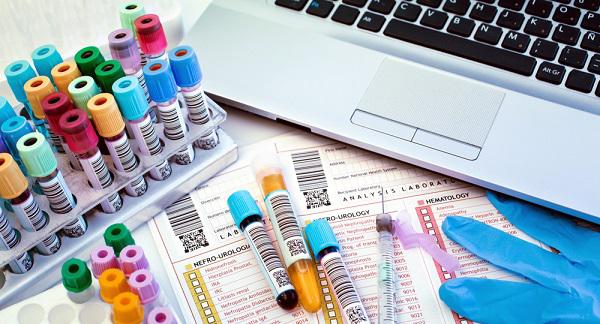How do I use an at-home test?
Instructions will vary depending on the type and brand of test kit. Below are examples of some common at-home tests and how they are performed.
Pregnancy Test
- Used to diagnose pregnancy by checking for a hormone called human chorionic gonadotropin (HCG). HCG is normally only produced during pregnancy.
- Test procedure:
- You will hold a test strip in your urine stream or collect your urine in a cup and place the test strip into the cup.
- If you are pregnant, the strip will display a colored line, a double line, or a symbol such as a plus sign. The type of display depends on the brand.
Follow up with your health care provider if the test is positive, or if the test was negative but you still think you might be pregnant.
Glucose Test
- Used to monitor blood sugar levels. This test is essential for some people with diabetes. If glucose gets too high or too low, it can cause dangerous complications.
- Test procedure:
- You will prick your finger with a device called a lancet to get a drop of blood.
- You place the blood on a test strip and insert it into a monitor.
- The meter will show your glucose level.
- There are different types of glucose meters. Each work in slightly different ways. Some may not even require you to prick your finger. Be sure to read and follow all the instructions carefully.
Fecal Occult Blood Test
- Used to check stool for signs of colon cancer. Your provider will give you a test kit.
- Test procedure:
- You will collect small samples of stool and place them on a special card or container.
- Seal and mail the card or container to your provider or a lab.
- The sample will be checked for blood. Blood in the stool can be a sign of colon cancer or other conditions.
- The testing laboratory or your provider will contact you with the results.
Hepatitis C Test
- Used to find out if you have hepatitis C now or were infected in the past.
- Test procedure:
- You will prick your finger with a device called a lancet to get a drop of blood.
- You place the blood sample on special piece of paper.
- You will seal and mail the paper to a laboratory.
- The testing laboratory or your provider will contact you with the results.
Genetic Test
- Used to find out if you may be at higher risk of cancer or other diseases by looking for certain genetic changes. Genetic tests may also be used to find out information about your ancestors. These tests work by comparing your genetic data with genetic data from large groups of people.
- Test procedure:
- You can order many of these tests yourself. Others require a provider’s prescription.
- Most test kits will instruct you to provide a sample of saliva or to take a swab from the inside of your cheek.
- You will mail the sample to the test company or as directed.
- The testing company or your provider will contact you with the results.
If you are using a test to find out your risk of disease, be sure to talk to your health care provider. These tests can’t diagnose diseases and are not as accurate as traditional lab-based genetic tests. But if a home test shows you may be at higher risk, your provider can monitor your health more closely.
COVID-19 Test
You may be able to use an at-home test for COVID-19. Check the CDC for the latest information these tests.
This article was originally published by Medlineplus.gov. Read the original article here.
